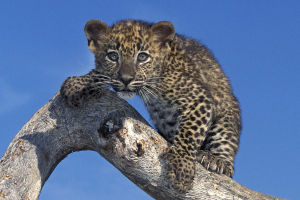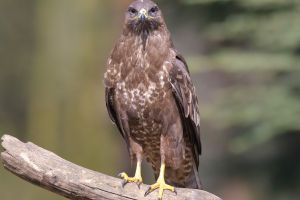The lion's mane is one of nature’s most striking and iconic features, setting the king of the jungle apart from other big cats.
This distinctive mane, which encircles a lion’s head and neck, is not just a flamboyant display of nature’s artistry but also serves several important purposes.
So Lykkers, Let’s delve into the fascinating reasons behind why lions have manes and what these impressive locks signify.
The Evolutionary Purpose of the Mane
The lion's mane is believed to have evolved primarily as a display feature to attract mates and assert dominance. Here’s how it contributes to a lion’s survival and social structure:
1. Sign of Health and Vitality: A lion's mane is a visible indicator of its health and genetic fitness. A thick, full mane suggests that a lion is in good condition, which can be attractive to potential mates. This trait helps lions select the strongest and most genetically superior partners, ensuring the survival of their offspring.
2. Dominance and Social Status: In the competitive world of lions, where males often engage in fierce battles for dominance, the mane plays a role in signaling strength and maturity. A larger, more impressive mane can deter rival males from challenging a lion’s status within the pride. It acts as a form of visual intimidation, reducing the likelihood of physical confrontations.
3. Protection in Fights: During territorial disputes and fights for dominance, the mane offers a degree of protection. The thick fur helps shield the lion’s neck and throat from bites and scratches, which are common in these intense battles. The mane’s padding can absorb some of the impacts, reducing injury to vital areas.
The Mane’s Physical Characteristics
The lion’s mane is not just about appearance—it has distinct physical attributes that contribute to its function:
1. Color and Size Variation: The mane’s color can range from light tan to deep black, with variations depending on the lion’s age, genetics, and environmental factors. The mane typically grows longer and fuller in males, becoming more pronounced as the lion matures.
2. Seasonal Changes: The mane’s appearance can change with the seasons. During the hotter months, the mane may appear shorter and less full, while it can become thicker and more luxurious during cooler periods. This seasonal variation helps lions regulate their body temperature.
3. Mane Care and Grooming: Lions invest significant time in grooming their manes. This care not only keeps the mane free from parasites and tangles but also maintains its condition and appearance. Grooming is a social activity within prides, reinforcing bonds among members.
Comparative Perspectives
The lion’s mane is unique among big cats, but it’s interesting to compare it with similar traits in other animals:
1. Other Big Cats: Unlike lions, most other big cats, such as tigers and leopards, do not have manes. Their physical adaptations and social behaviors are different, which means they do not need this feature for dominance or mating purposes.
2. Sexual Dimorphism: In many species of mammals, males exhibit traits that differ from females to attract mates or compete with rivals. The lion’s mane is a striking example of sexual dimorphism, where males have evolved a distinctive feature to enhance their reproductive success.
Unleashing the Truth: The Surprising Reason Why Lions Have Manes!
Video by Kenya Wild Parks
The Symbolic and Cultural Significance
Beyond its biological functions, the lion’s mane holds symbolic and cultural significance:
1. Symbol of Strength and Power: Throughout history, the lion’s mane has symbolized power, strength, and courage. It has been a prominent feature in various cultures, representing leadership and dominance.
2. Artistic and Cultural Depictions: The lion’s mane is frequently depicted in art, literature, and mythology. From ancient emblems and royal crests to modern media, the mane continues to capture human imagination as a symbol of nobility and majesty.
The lion's mane is a marvel of natural evolution, serving multiple roles from attracting mates to asserting dominance and protecting against injuries. This iconic feature not only distinguishes the lion as the king of the jungle but also highlights the intricate ways in which animals adapt to their environments and social structures. Next time you see a lion, remember that its majestic mane is much more than just a striking appearance—it’s a testament to the complex and fascinating world of wildlife.


